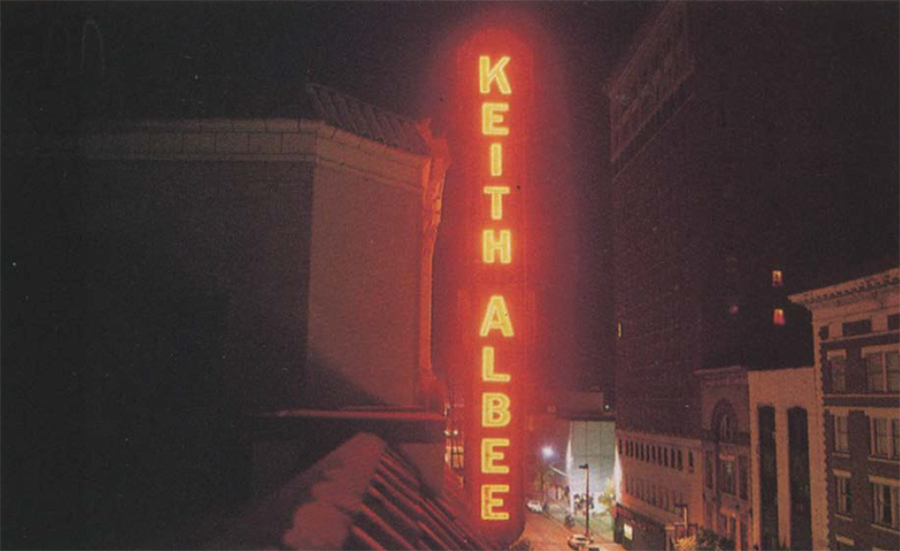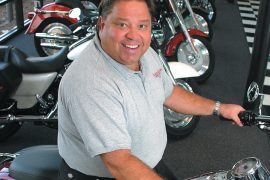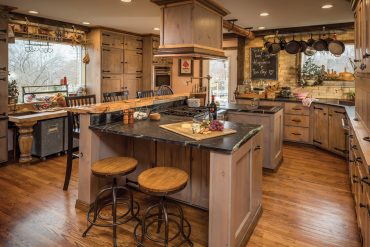West Virginia’s Opulent Show Palace
By Michael A. Friel
HQ 5 | AUTUMN 1990
Not all who have passed through the doors of the Keith-Albee Theatre over the past 62 years have come to see the internationally famous entertainers who have graced its stage or the countless motion pictures that have played its screens.
Some have come to the Keith-Albee simply to get a glimpse inside West Virginia’s masterpiece theater.
”We get people who just come in off the streets and want a look around,” explained Mary L. Calhoun, an employee of the theater. ‘They say they’ve never seen anything like it.”
Built at a time when movie theaters were truly picture palaces, the Keith-Albee is the largest, most ornate, most unusual theater in West Virginia.
Indeed, there is nothing like it within 150 miles of Huntington.
The Tri-State landmark is the creation of celebrated architect Thomas Lamb, who designed some of the most opulent theaters in Europe and North and South Americas.
Huntington theater owner A.B. Hyman had heard about Lamb when he decided to build Huntington a new showplace for vaudeville and movies in the 1920s. According to Hyman’s grandson, Derek, he raised $250,000 then wrote Lamb to ask if he would design the theater.
“Lamb wrote back and said he would design the theater,” explained the younger Hyman, president of the Greater Huntington Theater Corporation, which owns and operates the theater. “He said, ‘I’ll start sending you the plans, beginning with the basement. You begin building and I’ll send you the plans as I get them done.’
“Apparently they had spent the quarter of a million by the time they got out of the basement. It ended up costing them a few million dollars,” he said.
More than 550 tons of steel and two million bricks were used in the construction of the theater, which took 14 months to complete. At its center was a 2,800- seat main auditorium with superior acoustics, a fully rigged stage and four floors of adjacent dressing rooms, each named for large American cities. Trap doors on the stage enabled animals, performers and equipment to rise to the stage or sink into a large room below.
The auditorium’s rounded ceiling, three floors above the stage, was painted blue to make it appear as if the roof had been removed to reveal the sky. Small lights in the ceiling gave the impression of stars when lit. A series of spotlights, known as cloud machines, created the illusion of clouds floating across the sky. A gold, blue and red facade, extending from the stage and around three sides of the auditorium, was created using an elaborate mix of columns, planters, building fronts and sculptures, all adorned with maroon drapes.
A mezzanine under the balcony extends the length of the building. It overlooks the three-story main lobby with its semi-circular ceiling, accented with three huge stained glass chandeliers. The entire theater was decorated in the highly ornamental rococo style popular in the 1920s.
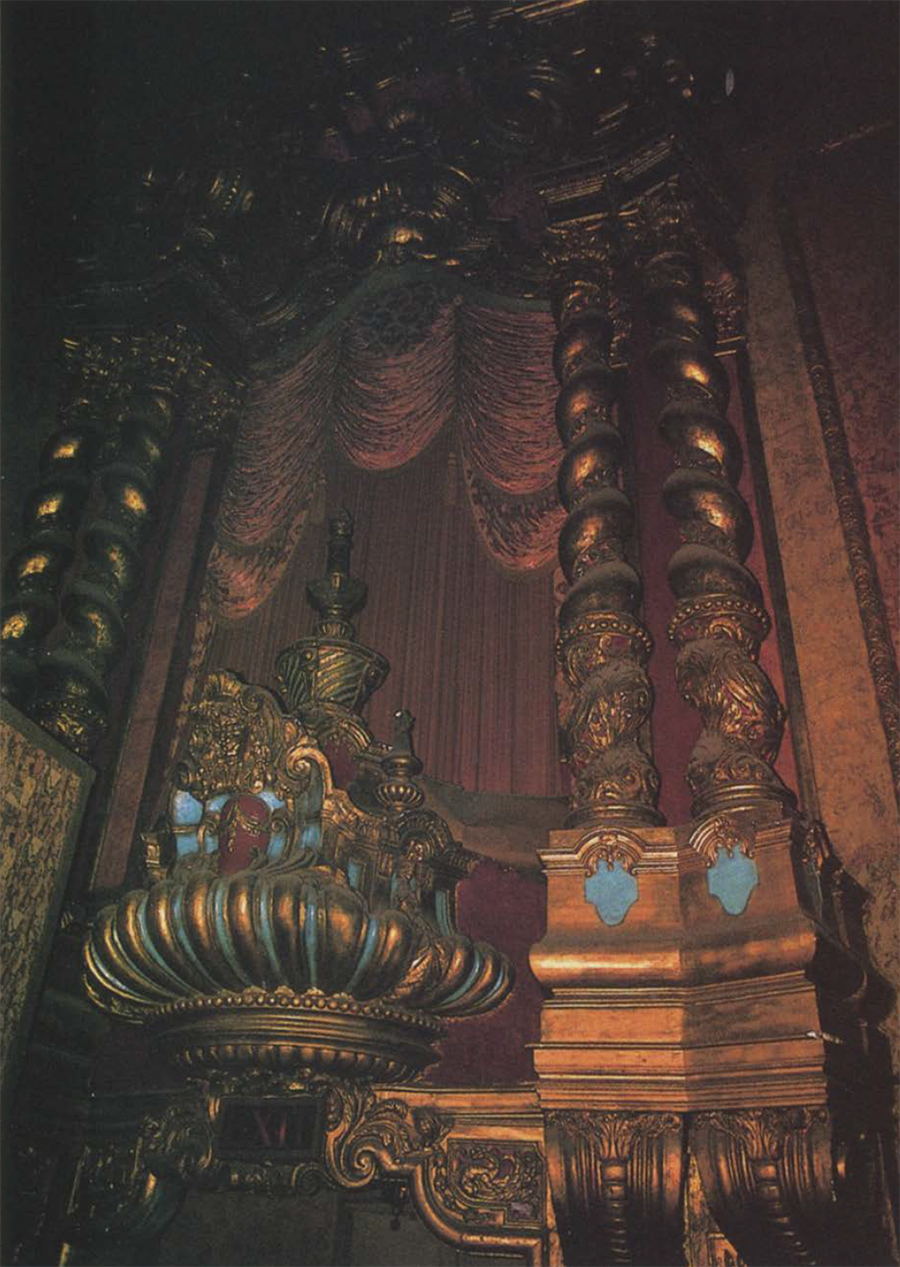
The Keith-Albee took its name from a popular vaudeville circuit of the time. ‘The rumor is that my grandfather went to those who ran the circuit and told them he was building this theater,” said DerekHyman. ‘They said, ‘If you name it after our circuit we will make sure that you get the top acts in town.”‘
Ironically, with the release of the first talking picture, “The Jazz Singer,” in 1927, vaudeville quickly faded into history. The once-popular form of entertainment was all but dead within a year after the Keith-Albee was constructed.
However, in its 62 years the theater still has managed to attract many of the top names in show business. The lists of those who have performed at the KeithAlbee reads like a who’s who of the entertainment world: Isaac Stern, Bette Davis, Myrna Loy, Harry Belefonte, Doris Day,Johnny Mathis, Duke Ellington, Henry Fonda and Lloyd Nolan, to name a few.
Thanks to the Marshall Artists Series, which for the past 54 years has staged many of its events at the Keith-Albee, the list continues to grow. “We’re utilizing the Keith-Albee more this year than we ever have,” said Celeste Winters Nunley, director of the Artists Series.
Because of its fly system and large stage and dressing area, the Keith-Albee is the only theater in the region that can accommodate many of the shows sponsored by the Series.
“The theater is very important to the Artists Series,” Winters Nunley said. “We wouldn’t be able to bring many of the large dance companies and Broadway shows to Huntington if it weren’t for the Keith-Albee.”
The Keith-Albee is not much different today than it was when constructed in 1928. In the mid-1970s the lower section of the main theater was divided into one 650-seat theater and two 225- seaters. A fourth theater was added behind the concession stand. Like most 62 year olds, the Keith-Albee is not in the shape it once was, although there are no plans for its retirement. A 1989 study found that, structurally, the building is in good shape. However, the owner said that, as time passes, more and more things need to be repaired. ‘There is always some kind of work to be done-drains to be fixed, electrical work, plastering,” Hyman said.
In the mid-l 970s when the Hyman family remodeled parts of the theater, some local residents, alarmed at how the theater was being changed, formed a group called “Save the Keith-Albee,” which attempted to raise money to purchase and restore the theater. “It didn’t go too far,” Hyman said.
“I’d love to have somebody buy it and renovate it to its old glory,” said Derek Hyman. “But I cannot do it myself. I mean it would cost millions of dollars.”
“I think it would be difficult for my father and uncle to sell the theater,” he said. “It was their father who built it. For me, I don’t think so. I would just love to have it renovated and returned to its beautiful self. I would also like to get out from under it. I’m the one who has to deal with the problems as they crop up. I’d like to go down the street and build a new theater.”
The Keith-Albee’s sister theater, The Ohio, in Columbus, was returned to its original state in 1984 after undergoing a $19 million restoration project. Like the Keith-Albee, The Ohio was designed by Thomas Lamb and constructed in 1928. Its main auditorium seats about 200 more people than the Keith-Albee. The Ohio was in continuous use until 1969 when the decaying theater faced closing and, worse yet, the dangers of a wrecking ball.
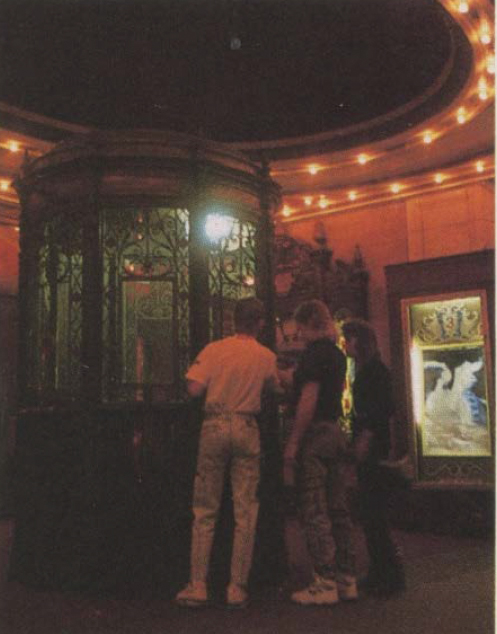
Citizens and community leaders, concerned about preserving the arts, began a huge campaign to save The Ohio. The Columbus Association for the Performing Arts, formed, in part, to save The Ohio, set out to buy and restore the theater with a grant from the National Endowment for the Arts and an outpouring of corporate gifts and private donations.
The first phase of the restoration involved redoing the ceiling, repairing the ornate plaster pillars and decorative trim, and cleaning and painting the walls. It cost approximately $3 million. In 1978 The Theater was named the official theater for the state of Ohio. That same year the second phase of the restoration project was begun costing $16 million.
Today The Ohio is the busiest performing arts center in the state of Ohio. It hosts an average of five performances each weekend. “The Ohio Theatre is booked on weekends for the next five years,” said Rosa Stoltz, vice president of the Columbus association. “Not only have we restored the building, but we have made it live and breath again. The lights are on and things are happening.”
The lights are still burning at the Keith-Albee as well. And, while the Hymans have said they have no plans to close the theater, many in the community are concerned about preserving the theater’s past and ensuring the future of large performing arts events in Huntington, which can only be accommodated by the Keith-Albee Theatre. Said Winters Nunley, “I hope it doesn’t take something drastic to make people realize how valuable the KeithAlbee is to Huntington.”

